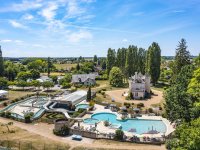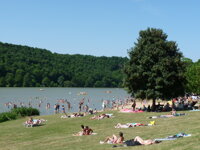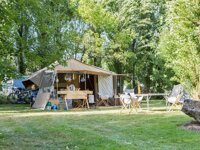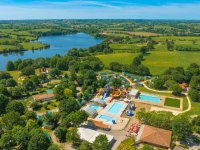
Most Beautiful Villages in Centre-Val & Pays-de-la-Loire
Majestic châteaux, steeped in history and overflowing with treasures, vividly illustrate the long and colourful past of the Loire.
Sorry, this map cannot be displayed.
The following consent is required:
Tracking & performance, Targeting & advertising.
Centre-Val de Loire
The splendid châteaux of this region, frequented by France’s nobility for centuries, are set beside the mighty River Loire and have provided the inspiration for the fairytale castles in Sleeping Beauty and Disney’s Beauty and the Beast. Known as the Garden of France, the region is fertile, characterised by soft green valleys and lush vineyards producing Sauvignon Blanc and Cabernet Franc among other varietals.
Châteaux to visit: Château de Chenonceau | Château de Chambord | Château de Blois | Clos Lucé | Château d’Amboise | Château d’Azay-le-Rideau | Château de Chaumont | Château de Cheverny | Château d’Ussé | Château de Valençay | Château de Villandry
Cher

Apremont-sur-Allier
Lying at the foot of a castle is the pretty village of Apremont with its dainty planted wells and old houses covered in foliage. In the latter half of the 20th century, Parc Floral opened in the village and is home to rare and endangered plant species and preserves ancient flowers and trees dating as far back as the 1700s.
Indre

Gargilesse-Dampierre
Crammed with galleries and studios, Gargilesse is a popular spot for artists and craftspeople including famous French novelist George Sand who stayed in the village regularly. Its dainty streets lined with ivy-covered stone houses lead to the Romanesque Notre-Dame church. Its crypt houses a 12th century Virgin and impressive wall murals.

Saint-Benoît-du-Sault
This fortified medieval village sits perched on the side of a hill surrounded by verdant green countryside. Its architectural and historical heritage range from the 13th century church, home to a stunning granite baptismal font, to the 14th ancient fortifications, 16th century houses and 18th century priory, which today houses various exhibitions.
Indre-et-Loire
![Candes-Saint-Martin [📸 Samur Tourist Board] ot-saumur.fr](https://static.alanrogers.com/assets/images/campsite/default.png)
Candes-Saint-Martin
Situated 35 miles west of Tours on the confluence of the Loire and Vienne is one of the oldest Gallo-Roman villages in the Loire Valley. Candes-Saint-Martin, a former fishing village, retains much of its original medieval structure and many of its buildings are listed historic monuments. High above the village is a plateau which offers stunning views over the valley and rivers.

Crissay-sur-Manse
Its enchanting white tufa stone houses with square turrets and mullioned windows, narrow streets teeming with flowers and 15th century castle ruins make Crissay-sur-Manse a joy to visit. The majority of the village was rebuilt in the 16th century after the Hundred Years War including many of its houses and its church. Its local culinary specialities include goats cheese, honey, gingerbread and wines of Chinon.

Montrésor
Originally built around a medieval stronghold, the village received a facelift in true Renaissance style in the 15th century when the royal court began spending more time in the region. Montrésor became a centre for courtiers and royal servants and in the late 1400s the village along with the old feudal castle was purchased and transformed into an elegant royal residence. Latterly the château was the property of Philippe d’Orleans, brother of Louis XIV. The beautiful houses, as well as the historic communal laundry on the banks of the tree-lined river, contribute to the village’s calming atmosphere.
Loir-et-Cher

Lavardin
Accessed via a narrow Gothic bridge spanning the weeping willowlined River Loir, this attractive medieval village is not one to be missed. The village, nestled in a leafy valley overlooked by the ruined, yet still imposing, ChЙteau de Lavardin has a rich past going back to prehistoric times. Its church contains beautiful frescoes and troglodyte houses mingled with elegant Renaissance buildings make for a unique visit.
Loiret
![Yèvre-le-Châtel [📸 larep.fr]](https://static.alanrogers.com/assets/images/campsite/default.png)
Yèvre-le-Châtel
Dominating the Rimarde Valley is the small fortified village of Yèvrele-Châtel. Its ruined 13th century castle proved its worth during the Hundred Years War, being the only defensive stronghold north of the River Loire not to be captured by the English or the Burgundians.
Pays-de-la-Loire
Majestic châteaux, steeped in history, vividly illustrate the colourful past of the Loire. These splendid buildings, frequented by France’s nobility for centuries provided the inspiration for the fairytale castles in Sleeping Beauty and Beauty and the Beast. Known as the Garden of France, the region is fertile, characterised by green valleys and vineyards.
Points of interest: Château d’Angers | Le Mans | Nuit des Chimères | Fontevraud Abbey | Château de Brissac | Parc Oriental de Maulévrier | Musée du Champignon | Rochemenier Village Troglodytique
Maine-et-Loire

Montsoreau
Sitting in the heart of the Loire Valley, Montsoreau is not only a member of ‘les plus beaux villages de France’ but also of “Villages de Charme de l’Anjou” and “Small Cities of Character’ and is at the centre of the Regional National Park Loire-Anjou-Touraine. The white tufa stone Renaissance château de Montsoreau was made famous by the novel “La Dame de Montsoreau” by French writer Alexandre Dumas.
Mayenne
![Sainte-Suzanne [📸 Mayenne Tourism] mayenne-tourisme.com](https://static.alanrogers.com/assets/images/campsite/default.png)
Sainte-Suzanne
Often seen as the pearl of Maine this small medieval town, much like Montsoreau, is a member of “green holiday resorts” and “small character town” labels. Its castle, built in the 17th century, is now home to the Architectural and Heritage Interpretation Centre, which dedicates itself to Mayenne’s heritage offering and hosts exhibitions, conferences and educational workshops.
Vendée

Vouvant
Stationed about midway between Nantes and Poiters and tucked snug in a meander of the River Mère, this medieval gem houses several historic sites and monuments. The Forest of Mervent-Vouvant that borders Vouvant is the region’s largest forest covering over 5,515 hectares. The Mélusine tower is a classified Monument Historique as is the Notre-Dame de l’Assomption Church and 13th century Romanesque bridge.








